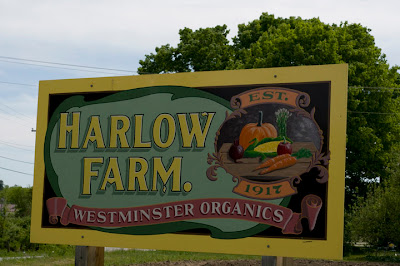
The other site I (Kacy) visited in between hanging out with my important people was in New Britain CT, and it was an urban garden on a pretty large scale. Trav and I parked in the parking lot of the store that abutted the garden and sold a lot of it's goods. On the wall were numerous newspaper articles featuring Mike and Tony (who has recently passed away), partners with a passion for the land. New Britain is somewhat of a rough city, there is a lot of crime there and it is a heavily populated city that is also pretty economically poor. Mike told us that the lot he now uses as a garden had had 16 greenhouses full of flowers previously, but had long since been abandoned and used as a dump by the city residents. Mike said there were bullet holes in the greenhouses when he first got there. He got a grant from the state to clean the site up, and he got to work hauling trashed cars, old greenhouses, construction materials and everyday garbage off the land. He was able to save several greenhouses from the flower business to use in his food production, and he's been planting ever since.
You are greeted with a phenomenal sight upon walking into the greenhouses; they are a marvel of artistry in there. There are a few straight rows, but mostly the shrubs, plants and trees just flow in a beautiful design that seems more natural than manmade. Mike has a fig tree as well as citrus trees, and rosemary shrubs that are huge. There are rabbit hutches out back that house about 10 rabbits who are living a peacefully retired lifestyle, though their poop comes in handy as fertilizer.


















































